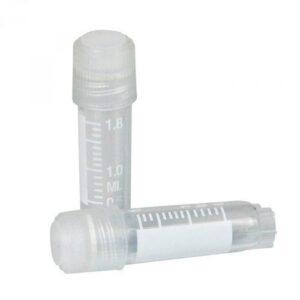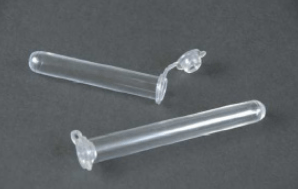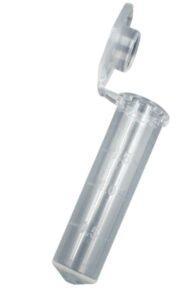Are you curious about the essential tools that drive scientific research and laboratory experiments? Look no further than culture tubes. These unassuming yet indispensable vessels play a pivotal role in various fields, from microbiology and genetics to cell and tissue engineering. In this blog, we will delve into the world of culture tubes, examining their diverse types, applications, and optimal usage in medical laboratories.
Culture tubes are the unsung heroes of laboratory experiments, providing a controlled environment for studying microorganisms, cultivating cells and tissues, and facilitating research breakthroughs. In this blog post, we will explore various types of culture tubes, including glass, plastic, and disposable options. Additionally, we will discuss their benefits, applications, and storage techniques, ensuring optimal experimental outcomes.
Types of Culture Tubes
There are different types of culture tubes available for various laboratory applications. Here are some common types.
- Glass Culture Tubes: Known for their transparency, heat resistance, and chemical inertness.
- Plastic Culture Tubes: Lightweight, shatterproof, and disposable, making them convenient for routine procedures.
- Disposable Culture Tubes: Designed for single-use, eliminating the need for sterilization and reducing cross-contamination risks.
- Microbiological Culture Tubes: Specifically used for studying microorganisms in microbiology, genetics, and medical diagnostics.
- Tissue Culture Tubes: Used in cell and tissue engineering research for cultivating and studying various cell types.
- 15 ml Culture Tubes: Specific size and capacity suitable for various medical laboratory applications.
- 50 ml Culture Tubes: Accommodate larger sample volumes and facilitate efficient processes in research and diagnostics.
These different types of culture tubes provide flexibility and options to meet the specific requirements of different experiments and research areas.
Exploring the Benefits of Glass Culture Tubes
Glass culture tubes have long been favored in scientific research and laboratory settings. Their unique features and properties make them ideal for a range of experiments. We will dive into the advantages offered by glass culture tubes and examine their applications in different scientific disciplines. Glass culture tubes offer several benefits in laboratory settings.
- Transparency: Glass tubes allow for clear visibility of the sample, enabling visual monitoring of growth, turbidity, and other changes.
- Chemical Inertness: Glass is resistant to chemical reactions, making it suitable for a wide range of applications and compatible with various reagents and solvents.
- Heat Resistance: Glass tubes can withstand high temperatures, allowing for sterilization and autoclaving without deformation or degradation.
- Reusability: Glass tubes can be easily cleaned and sterilized, making them cost-effective and environmentally friendly compared to disposable alternatives.
- Sample Integrity: Glass does not interact with or leach contaminants into the sample, ensuring the integrity and purity of the experimental results.
- Durability: Glass culture tubes are durable and long-lasting, withstanding repeated use and handling in laboratory environments.
- Versatility: Glass tubes come in various sizes and designs, catering to different experimental requirements and facilitating precise measurements and transfers.
The Advantages of Plastic Culture Tubes
Plastic culture tubes have gained prominence in the medical industry due to their numerous advantages. From their versatility to cost-effectiveness, plastic tubes are widely used and contribute to efficient and reliable laboratory procedures.Plastic culture tubes offer several advantages in laboratory and medical settings. Firstly, they are lightweight and shatterproof, making them safer and more convenient to handle compared to glass tubes. Plastic tubes are also disposable, eliminating the need for cleaning and sterilization, reducing the risk of contamination. Additionally, plastic tubes are often transparent, allowing for easy visualization of the sample and monitoring of growth or changes. They are also chemically resistant, ensuring compatibility with a wide range of reagents and substances. Plastic culture tubes are available in various sizes and designs, offering versatility and accommodating different experimental requirements.
Convenience and Safety with Disposable Culture Tubes
Disposable culture tubes revolutionize laboratory practices, providing unparalleled convenience and safety. These single-use tubes eliminate the need for sterilization, reduce cross-contamination risks, and ensure reliable and efficient experimental results.
Disposable culture tubes provide both convenience and safety in laboratory settings. These single-use tubes eliminate the need for cleaning and sterilization, saving valuable time and effort. They are pre-sterilized, ensuring aseptic conditions for experiments and minimizing the risk of contamination. Disposable culture tubes are made from high-quality materials that are compatible with a variety of samples and reagents. Their leak-proof design prevents spills and protects both the sample and the user. Additionally, disposable tubes are often transparent, allowing for easy observation of the sample without the need for transferring it to another container. With their convenience and enhanced safety features, disposable culture tubes are a valuable asset in any laboratory.
Unveiling the Role of Microbiological Culture Tubes
Microbiological culture tubes play a pivotal role in studying microorganisms, allowing researchers to delve into the fascinating world of microscopic life. They have applications in various research fields, including microbiology, genetics, and medical diagnostics, and are important in advancing scientific knowledge.
Microbiological culture tubes play a vital role in studying and cultivating microorganisms in laboratory settings. These tubes provide a controlled environment for the growth and observation various microbial species. They are designed to support the development of pure cultures by providing the necessary nutrients, pH levels, and oxygen conditions required for microbial growth. Microbiological culture tubes enable researchers to isolate and identify specific strains of microorganisms, study their growth characteristics, and perform various tests and experiments. By facilitating the study of microorganisms, culture tubes contribute to advancements in fields such as medicine, agriculture, and environmental science.
Advancing Research with Tissue Culture Tubes
Tissue culture tubes have revolutionized the field of cell and tissue engineering. They are significant in cultivating and studying various cell types, pushing the boundaries of medical treatments, and contributing to scientific breakthroughs.
Tissue culture tubes play a crucial role in conducting research related to cell and tissue engineering. These specialized tubes provide a controlled environment for the cultivation and study of various types of cells. They enable scientists to create and maintain cell cultures, which are essential for studying cellular behavior, developing new medical treatments, and making scientific advancements. Tissue culture tubes allow researchers to investigate cell growth, differentiation, and response to stimuli, providing valuable insights into cellular mechanisms and facilitating the development of innovative therapies and regenerative medicine approaches.
The Versatility of 15 ml Culture Tubes
15 ml culture tubes are widely used in medical laboratories for various research purposes. These tubes have a specific capacity of 15 ml, making them suitable for handling moderate sample volumes. They offer convenience and reliability in experimental procedures, allowing researchers to accurately measure and transfer liquid samples. 15 ml culture tubes are commonly utilized in cell culture, molecular biology, and biochemistry experiments. Their compact size and compatibility with standard laboratory equipment make them a versatile choice for a range of applications. These tubes provide a secure and controlled environment for the growth and analysis of cells, facilitating precise and reproducible results in scientific investigations.
Exploring the Applications of 50 ml Culture Tubes
Learn about the uses and advantages of 50 ml culture tubes in the medical industry. These larger tubes accommodate sample volumes and facilitate efficient processes in research and diagnostic laboratories, propelling advancements in healthcare.
50 ml culture tubes find wide applications in the medical industry for various laboratory procedures. These tubes have a larger capacity of 50 ml, making them suitable for handling larger sample volumes. They are commonly used in research and diagnostic laboratories for tasks such as sample storage, cell culture, and centrifugation. 50 ml culture tubes are ideal for applications that require working with larger quantities of liquids or biological specimens. They provide a convenient and reliable solution for processing and analyzing samples in various fields. The versatility and ample space offered by 50 ml culture tubes make them an essential tool for efficient laboratory workflows.
Effective Cleaning Techniques for Culture Tubes
Maintaining a sterile environment is crucial in laboratory settings. Effective cleaning techniques are crucial for maintaining the integrity and reliability of culture tubes in laboratory settings. To ensure accurate and contamination-free results, it is important to follow proper cleaning protocols. Start by rinsing the culture tubes with distilled water to remove any residual substances. Next, use a mild detergent or enzymatic cleaner to thoroughly clean the tubes, making sure to scrub all surfaces. Rinse the tubes again with distilled water to remove any traces of the cleaning agent. For stubborn residue, soaking the tubes in a diluted bleach solution can be effective. After cleaning, autoclaving or sterilizing the tubes using appropriate methods is essential to eliminate any remaining microorganisms. Regular inspection and validation of the cleaning process should also be carried out to maintain the quality and reliability of the culture tubes.
Proper Storage Methods for Culture Tubes
Proper storage is vital to preserve the quality and usability of culture tubes. There are optimal methods for storing culture tubes in medical laboratories, prolonging their shelf life, and ensuring they remain suitable for various research applications.
Proper storage of culture tubes is essential to maintain their integrity and ensure their suitability for laboratory use. Here are some recommended storage methods. First, store the culture tubes in a clean and dry environment to prevent contamination and moisture damage. Consider using racks or holders to keep the tubes organized and prevent them from tipping over. It is advisable to store the tubes in a cool and dark place to minimize exposure to light and temperature fluctuations. Additionally, label the tubes with relevant information such as the date, contents, and any specific storage requirements. This helps in maintaining sample traceability and avoids confusion. Following these storage methods can help extend the shelf life of culture tubes and preserve the integrity of the samples inside.
Organizing Culture Tubes for Efficient Laboratory Workflow
Efficiency is key in any laboratory setting. There are various effective strategies for organizing culture tubes, enhancing workflow efficiency, ensuring sample traceability, and maintaining a well-structured and accessible culture tube inventory.
The efficient organization of culture tubes is crucial for maintaining a smooth laboratory workflow. Here are some strategies to organize culture tubes effectively. Firstly, categorize the tubes based on their contents, experiment type, or any other relevant criteria. Use labeled racks or trays to keep the tubes segregated and easily accessible. Arrange the tubes in a logical order, such as alphabetically or by experiment timeline, to facilitate quick retrieval. Consider implementing a digital inventory system to track the location and status of each tube. This helps streamline the process of locating specific samples. Regularly declutter and remove expired or unnecessary tubes to optimize space. By implementing these organization strategies, laboratories can enhance their efficiency, minimize errors, and improve overall productivity.
Culture Tubes from Leading Indian Manufacturers
Q-line Viral Transport Medium
The Q-line Molecular VTM kit, manufactured by Q-line Biotech Private Limited, is highly regarded as one of India’s most reliable transport devices for viral samples, including SARS CoV-2. This kit includes a viral transport medium and two individually packed sterile polyester swabs, ensuring maximum patient comfort during sample collection.
The VTM tube, a 10 cc tube with a 3 cc capacity and a stand base, undergoes stringent quality control measures to guarantee sample viability and the safety of healthcare staff. It is validated and approved by ICMR, featuring a leak-proof design with recommended cryopreservatives. The tube also has a color indicator to detect improper storage, physical damage, or contamination. With narrow osmolality range and optimized antibiotics concentration, it ensures excellent recovery and inhibits bacterial contamination. Each component is individually packed and gamma sterilized for optimal hygiene.
Cyrovial Tube 1.8 ml
Recombigen Laboratories Pvt. Ltd. is the largest manufacturer and global supplier of laboratory plastic consumables, including the Cyrovial Tube 1.8 ml. These tubes are constructed from high-quality polypropylene/polyethylene material, ensuring durability and reliability. They are commonly used in laboratories for storing biological materials at extremely low temperatures, as low as -190°C, including human and animal cells.
The Cyrovial Tube features a writing area along its length, allowing for easy sample identification and organization. It is equipped with volume graduation markings, facilitating accurate volume measurements. The tube caps are designed with a seal ring, ensuring complete leak-proof protection for the samples. Additionally, the base of the tubes has longitudinal grooves, providing stability and preventing rolling when placed on a flat surface. These features make the Cyrovial Tube an ideal choice for secure and efficient sample storage in laboratory settings.
Sample Tube
The Sample Tube, manufactured by Alpha Medicare and Devices Ltd., is an odorless and translucent tube designed for pathological activities. It is sterilized and ready for single-use, meeting the highest standards of hygiene and safety in laboratory settings. This tube provides a convenient solution for storing and handling samples in a variety of laboratory procedures, including pathological examinations and diagnostic tests. With its transparent construction, the Sample Tube allows for easy visual inspection of the sample, ensuring accurate analysis and observation.
V-LOCK Micro-Centrifuge Tube
Levram Lifesciences Pvt. Ltd., a leading manufacturer and global supplier of culture tubes in India, presents the V-LOCK Micro-Centrifuge Tube. These tubes are available in different volumes, including 0.5 ml, 1.5 ml, and 2.0 ml, catering to various research requirements in molecular biology experiments.
The V-LOCK Micro-Centrifuge Tube is designed with a non-porous seal cap, ensuring a tight and secure closure. Its frosted writing surface allows for easy sample identification and labeling. The tube features a smooth design with a single-tap lock snap cap, facilitating convenient opening and closing. With fine and transparent volume graduations, accurate measurements can be easily made. The flexible lid enhances ease of use during sample handling. These autoclavable tubes are durable and long-lasting, making them suitable for repeated use in laboratory settings.
The Future of Medical Devices: Medzell
Innovation in the medical industry continues to flourish, and Medzell is at the forefront of promoting Indian medical devices in emerging markets. This futuristic B2B platform revolutionizes the healthcare landscape, connecting medical device manufacturers with global markets.
Medzell represents the future of medical devices, offering a futuristic B2B platform that promotes Indian medical devices in emerging markets. This innovative platform connects manufacturers, distributors, and healthcare providers, facilitating seamless transactions and expanding the reach of cutting-edge medical technology. Medzell showcases a wide range of high-quality medical devices, including culture tubes, that adhere to international standards and regulations. With its user-friendly interface, Medzell simplifies the procurement process, allowing healthcare professionals to browse, compare, and purchase medical devices with ease. By leveraging Medzell’s platform, manufacturers can showcase their products to a global audience and establish fruitful partnerships. With its commitment to quality, transparency, and innovation, Medzell is revolutionizing the medical device industry, shaping the future of healthcare worldwide.






